Pig farming is one of the most lucrative and profitable animal enterprises in India, with most individuals succeeding in commercial pig breeding. Pigs are prolific breeders, able to produce 10 to 14 piglets in a single birth, making commercial pig farming profitable. Pig meat is in great demand since it is both nutritious and tasty. Because pigs are prolific breeders, the number of animals on the farm can quickly increase. Pigs develop faster than other cattle in the same category.
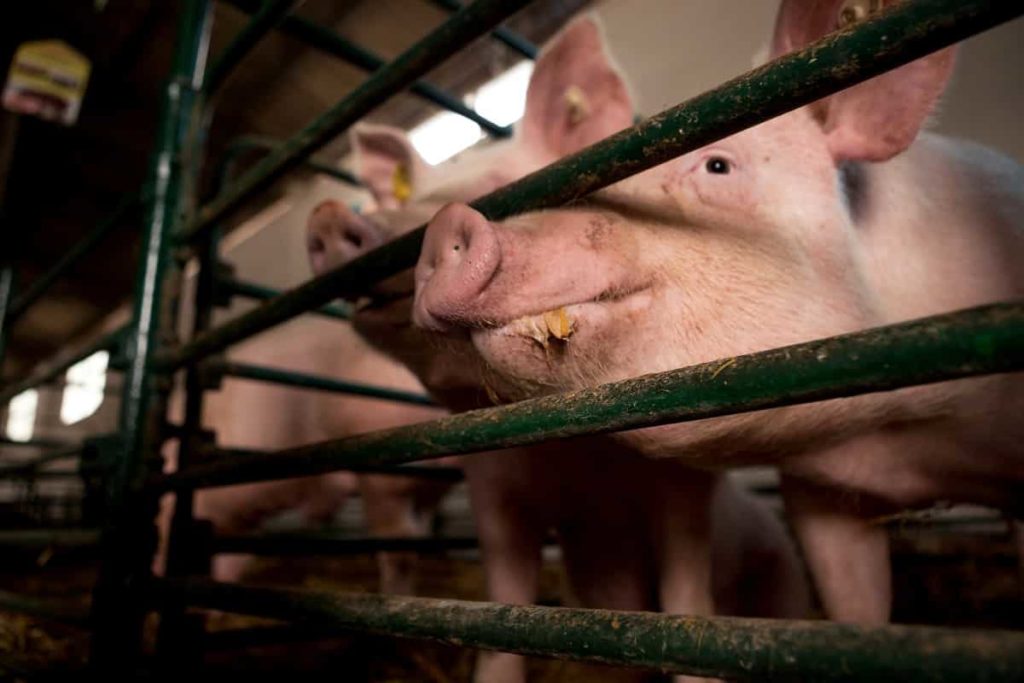
Pork has a massive demand in the export market. Other products, such as pig fat, skin, hair, bacon, and bones, are utilized to manufacture various luxury items in addition to meat. You must have a suitable pig farming business plan based on your budget to succeed in a commercial piggery company. Various pig farming training institutions and pig breeding centers have been developed in India. Let’s check out a few tips for earning 20 lakh per year from raising Pigs.
Before starting a commercial piggery, you need to learn about the different kinds of pigs and how to handle them. You can enroll in any pig training course to learn more about the commercial pig farming company. You may also learn about commercial pig farming industry challenges by visiting local pig farms.
What are the health benefits of consuming pork?
Pork is classified as red meat, even though it is sometimes called “the other white meat.” It’s eaten worldwide, even though eating pork is forbidden in several religions, such as Islam and Judaism.
Pork has a reputation for being harmful since it is red meat. Nevertheless, it is a good source of several minerals and high-quality protein. If used in moderation, it can be a nutritious supplement to a balanced diet. Vitamins and minerals found in pork include phosphorus, selenium, and thiamine. Pork contains more thiamine, a B vitamin required for a wide range of biological functions, than other red meats like beef and lamb. In addition, vitamins B6 and B12, rich in pork, are necessary to develop blood cells and brain function.
In case you miss this: Common Mistakes in Pig Farming: For First Time Pig Owners
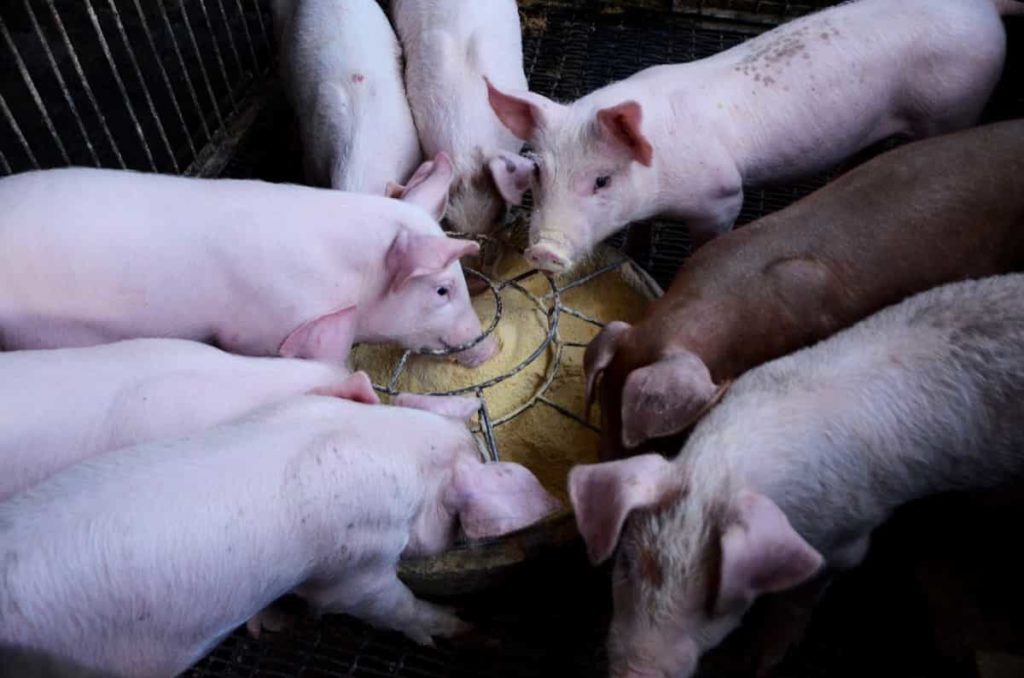
Pork is also a good source of iron because heme-iron, abundant in red meats, is easily absorbed by the human digestive system. In addition, pork contains selenium, which is necessary for normal thyroid function. A six-ounce pork chop has more than 100 percent of the daily recommended selenium requirement.
Pork proteins are excellent in quality and include all essential amino acids, making them perfect foundations for muscle development. In addition, pork consists of the amino acid beta-alanine, which aids in the formation of carnosine in the body. Carnosine is an amino acid that is required for muscle function.
Earning 20 lakh per year from raising Pigs
The success story of Mr. Hanumanthu
Mr. Hanumanthu of Mahaboobnagar district, Telangana, says that pig farming has been gaining demand recently. Still, there is no proper supply for this demand since many people stereotype that pig rearing is taboo or a lowly activity. Mr. Hanumanthu proved them wrong by earning high profits from rearing pigs. His farm is located on the outskirts of Mahaboobnagar city, with a peaceful environment for pigs to grow. He studied B.Tech and joined as a software employee in a private company, but he wasn’t satisfied.
To create something on his own and gain satisfaction, he chose this field he is familiar with to invest in, and now he rears nearly 1000 pigs by dividing them into two batches per year. He transformed his childhood work into an occupation and said he was happy and satisfied with his work. He has been expanding his farm for the past year, learning from his mistakes, and now he can rear nearly 1000 pigs a year.
In case you miss this: Pig Farming Tips, Techniques, Ideas, and Secrets
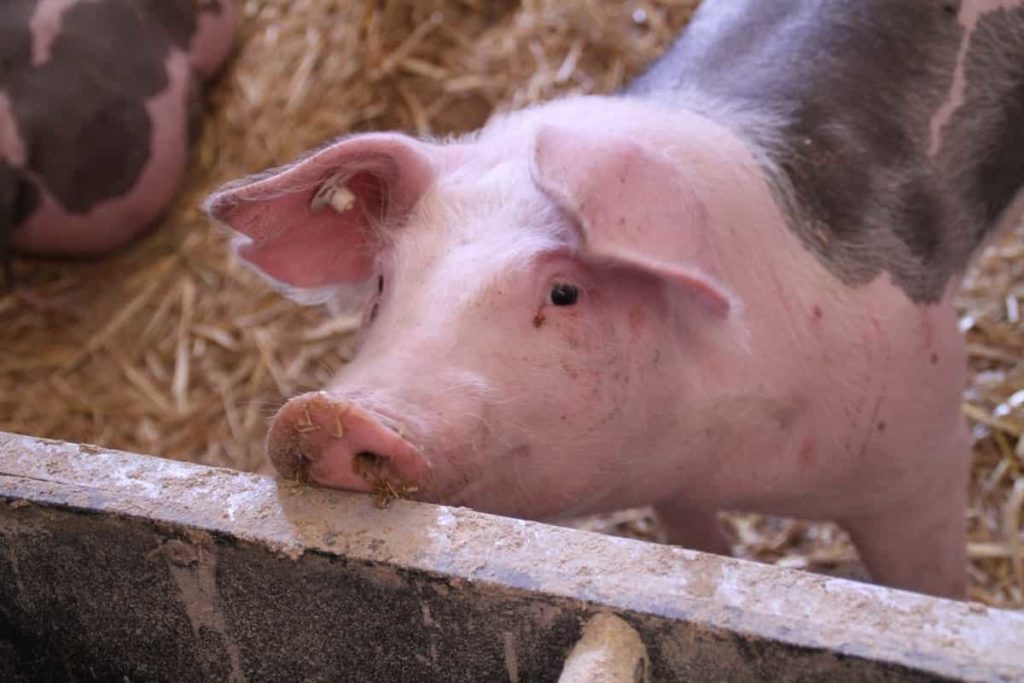
Selection of breed in Mr. Hanumanthu’s Pig farm
Mr. Hanumanth uses the kids produced by crossing Large White Yorkshire and country breeds for marketing. He says that the Yorkshire breed can produce more meat than country breeds, whereas the country breeds are more disease resistant than the Yorkshire. So the pigs formed by crossing these two breeds can grow till they attain huge weight and are less prone to diseases. In this way, you can reduce medicinal costs and a small number of feed costs.
In this way, Mr. Hanumanthu chose the correct breeds to gain more profits. The baby pigs produced by crossing can gain up to 80 kgs in just 8-9 months. The average Yorkshire breed can weigh nearly 100 kgs in 8-9 months; however, those are less disease resistant. The breed obtained by crossing is high disease resistant and can help you reduce the maintenance cost and work.
Shed construction details of Mr. Hanumanthu’s pig farm
While constructing a shed for pigs, you have to allow 15 square feet of space for each animal. Still, Mr. Hanmanthu is ignorant about this fact while building his shed. He allotted only 10 square feet, but the pigs are comfortable as the place he chose for the shed is on the city’s outskirts, stress-free for pigs and free from any pollution. So he constructed his first shed considering only 60 animals. Still, he realized it was not enough to expand his farm, so he built three other large sheds estimating the total farm capacity of 500 animals.
In case you miss this: Organic Pig Farming, And Production Guide
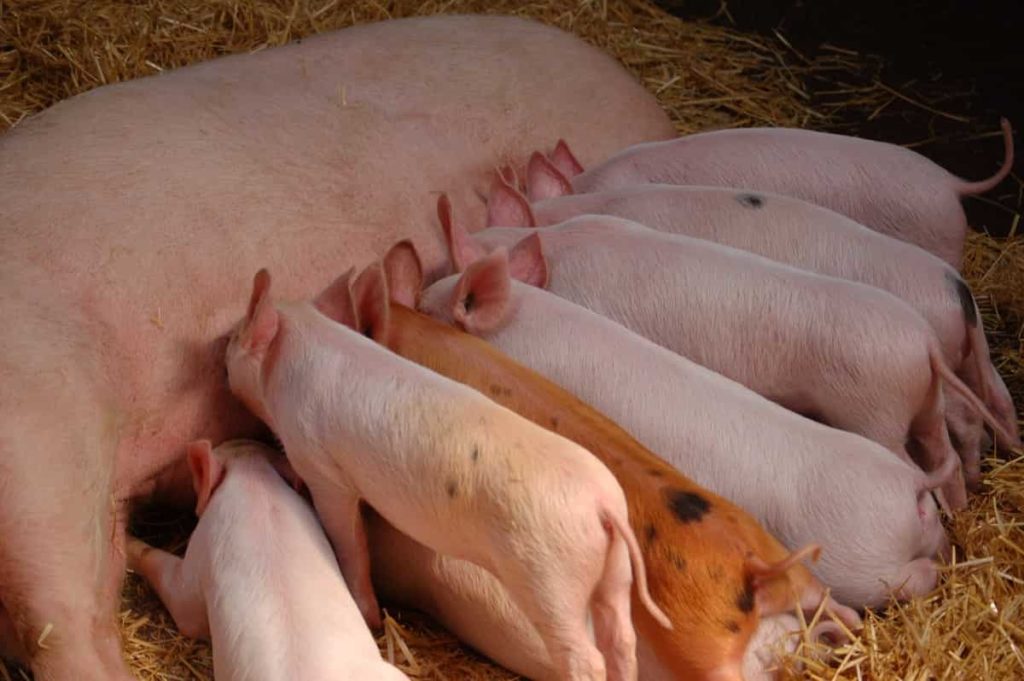
Rearing of pigs according to Mr. Hanumanthu
He chose to earn income by marketing meat instead of piglets. When asked why, he answered that producing piglets for marketing purposes needs a lot of work, and also, if we don’t maintain the correct fat content in the mother pig, it can lead to abortions. Also, there is less awareness among people for pig farming, and it might be hard to find a buyer for piglets. He markets the pigs to nearly 14 states, including Telangana, and most of these are north states since the pork consumption is higher in the north than in south India.
At starting, he bought pigs of 5-6 months of age and started rearing them until they reached 10-12 months of age. The pigs are ready to be sold between 10 to 12 months of age. They weigh nearly 30-40 kgs when they are bought, and at the time of marketing, they weigh over 100 kgs. Garbage collected from different restaurants is supplied as feed to these animals. It costs him nearly 5-6 rupees per kg to buy garbage from various sources, including transportation and workers’ costs.
While growing period, you have to provide them nearly 4 to 5 kgs of this garbage per day to feed the pigs. You have to supply feed in the mornings and evenings. At the time of marketing, dry feed is mixed with regular feed given daily, which can result in developing healthy and rich flesh in pigs. Dry feed helps the pigs with nutrition and, at the same time, makes them hungry, which makes them drink more amount of water. This can help pigs properly digest and clean their digestive track before they get marketed to various places.
Every two months, you have to deworm your pigs, preventing them from getting attacked by various diseases. Two doses of HS are vaccinated to the pigs in the first six months, the first dose after the first three months they are born, and the second dose after the next three from the first dose. And also, these average vaccine is given to these pigs when they become six months. So for a 100 kg pig after dressing, we can obtain 70 kgs of meat.
In case you miss this: Pig Feed Chart and Pig Weight Chart for Beginners
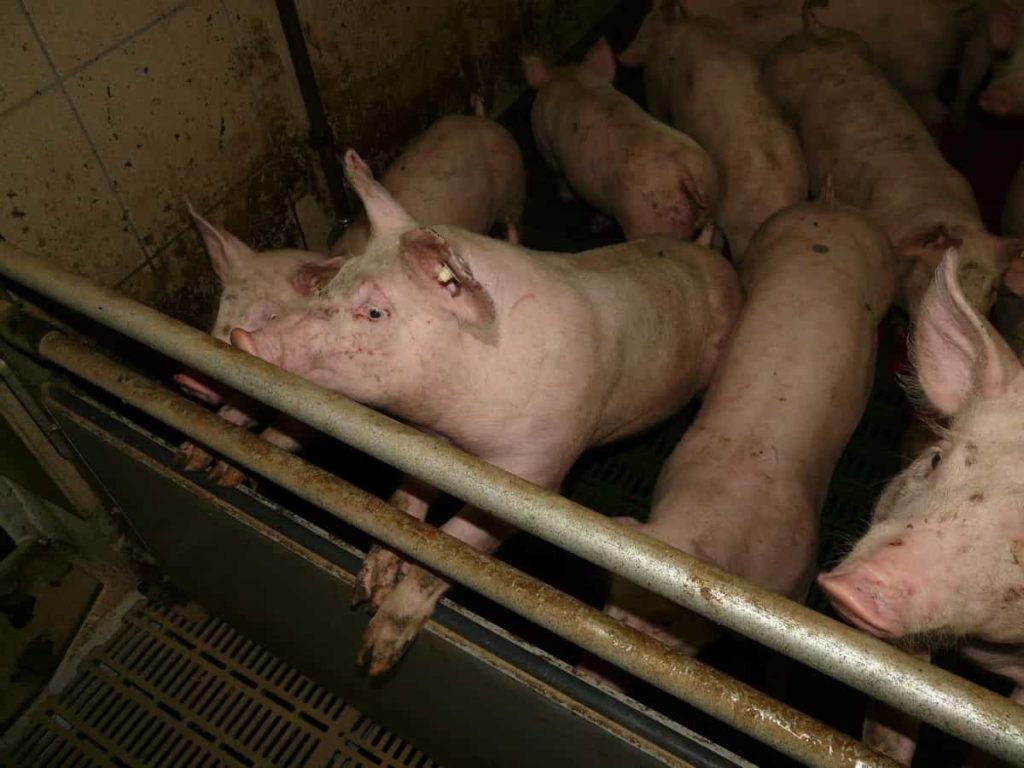
Marketing and profit analysis of Mr. Hanumanthu’s farm
For each animal, including animal, feed, and labor cost, Mr. Hanumanthu spends around 2000 rupees, which means for a batch of 500 animals, his investment is 10,00,000 rupees. And he obtains a profit of 10,00,000 to 12,00,000 per batch, excluding the investment he made. On average, Mr. Hanumanthu spends nearly 20,00,000 rupees per year, and he acquires a profit of almost 20,00,000 to 24,00,000 rupees per year. This is an excellent income. Mr. Hanumanthu markets his pigs in several states such as Kerala, Karnataka, and Tamil Nadu.
There is a huge demand for Yorkshire breed in Kerala, says Mr. Hanumanthu. So he suggests farmers do marketing instead of selling their pigs to the traders. Selling your pigs to traders can affect your profit percentage, he added. So if you can market the pigs yourself, you can see huge profits. Now Mr. Hanumanthu is a proud owner of his pig farm and is happy and satisfied that he entered into this business. He also says that there will be a huge demand for pigs in the coming years. So he suggests young farmers get into this business.
He also expressed that many people think rearing pigs is a taboo or a lowly activity. This has been in our society for decades. Still, there is nothing wrong with doing something we like unless it affects someone physically or mentally. In this way, he is rearing pigs on a large scale and owns one of the largest pig farms in Mahboobnagar district.
In case you miss this: Pig Feed Formulation; Types of Pig Feed – A Full Guide.
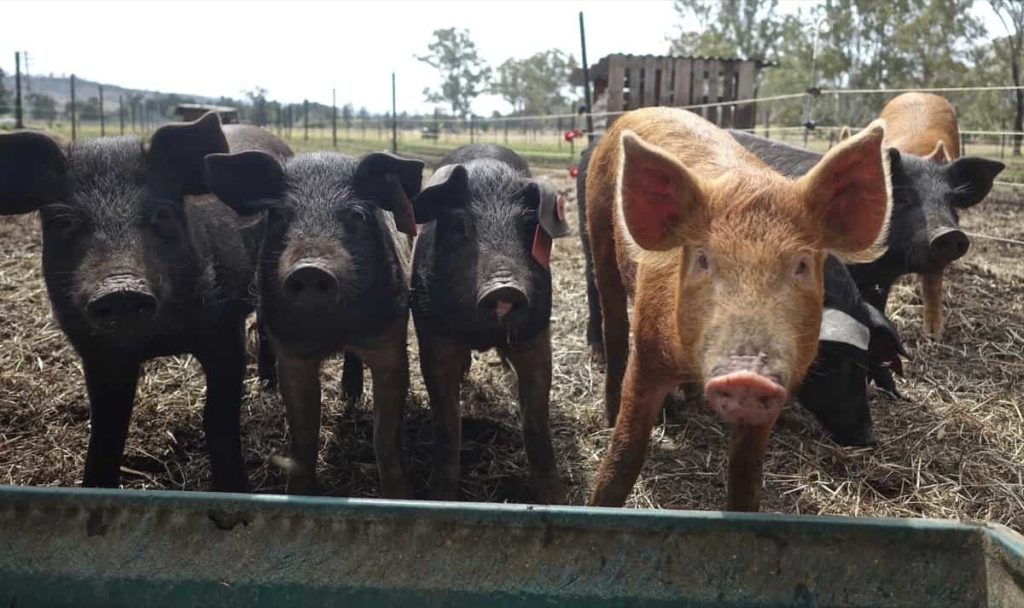
Frequently asked questions about pig farming
Which is the more profitable pig breed for rearing purposes?
The best pig breeds used for commercial pig rearing are Hampshire, Large White Yorkshire, Ghangaru, and Landrace. The giant white Yorkshire is the most popular meat breed. An adult male boar may weigh between 350 and 400 kg, whereas an adult female pig can weigh 250 and 300 kg. Therefore, cross-breeding is simple with them.
What is the best advantage of rearing pigs?
Pig farming provides the following advantages. Pigs have the best feed conversion efficiency of any meat-producing animal. They take regular feed and convert it into their flesh high in weight and rich in nutrition. These come under the animals with the highest feed conversion ratio, excluding broilers. These can help you gain more profits with less investment and less time.
How much does a pig farmer earn?
As we saw above, Mr. Hanumanthu invests rupees 2000 per pig per batch and obtains rupees 8000 per pig as a profit. Sometimes the rate of pork can fluctuate. Even then, you can gain no less than 6000 rupees per pig. Multiply this value with the count of pigs you have on your farm, and that is your approximate investment and profit of your pig farm.
Which breed of pigs grows fastest?
Durocs are known for being among the toughest and fastest-growing pigs available.
How many times can you breed a pig?
Mother pigs can reproduce twice a year and have two healthy litters. Their pregnancy period is brief – around three months and three weeks — allowing them to reproduce more often. Duroc pigs produce slightly bigger litters, with 10 to 15 piglets on average. This is relatively high when compared to the average pig.
- Types of Pesticides Used in Agriculture: A Beginner’s Guide
- Economical Aquaculture: A Guide to Low-Budget Fish Farming
- 15 Common Planting Errors That Can Doom Your Fruit Trees
- How to Make Houseplants Bushy: Effective Tips and Ideas
- Innovative Strategies for Boosting Coconut Pollination and Yield
- Pollination Strategies for Maximum Pumpkin Yield
- The Complete Guide to Chicken Fattening: Strategies for Maximum Growth
- Natural Solutions for Tulip Problems: 100% Effective Remedies for Leaf and Bulb-Related Issues
- Revolutionizing Citrus Preservation: Towards a Healthier, Greener Future
- Natural Solutions for Peony Leaf and Flower Problems: 100% Effective Remedies
- Maximizing Profits with Avocado Contract Farming in India: A Comprehensive Guide
- Natural Solutions for Hydrangea Problems: 100% Effective Remedies for Leaf and Flowers
- The Ultimate Guide to Choosing the Perfect Foliage Friend: Bringing Life Indoors
- From Sunlight to Sustainability: 15 Ways to Use Solar Technology in Agriculture
- The Ultimate Guide to Dong Tao Chicken: Exploring from History to Raising
- The Eco-Friendly Makeover: How to Convert Your Unused Swimming Pool into a Fish Pond
- Mastering the Art of Delaware Chicken Farming: Essentials for Healthy Backyard Flocks
- 20 Best Homemade Fertilizers for Money Plant: DIY Recipes and Application Methods
- How to Craft a Comprehensive Free-Range Chicken Farming Business Plan
- Brighten Your Flock: Raising Easter Egger Chickens for Beauty and Bounty
- How to Optimize Your Poultry Egg Farm Business Plan with These Strategies
- Subsidy for Spirulina Cultivation: How Indian Government Schemes Encouraging Spirulina Farmers
- Ultimate Guide to Raising Dominique Chickens: Breeding, Feeding, Egg-Production, and Care
- Mastering the Art of Raising Jersey Giant Chickens: Care, Feeding, and More
- Ultimate Guide to Raising Legbar Chickens: Breeding, Farming Practices, Diet, Egg-Production
- How to Raise Welsummer Chickens: A Comprehensive Guide for Beginners
- How to Protect Indoor Plants in Winter: A Comprehensive Guide
- Ultimate Guide to Grow Bag Gardening: Tips, Tricks, and Planting Ideas for Urban Gardeners
- Guide to Lotus Cultivation: How to Propagate, Plant, Grow, Care, Cost, and Profit
- Agriculture Drone Subsidy Scheme: Government Kisan Subsidy, License, and How to Apply Online
- Ultimate Guide to Raising Araucana Chickens: Breed Profile, Farming Economics, Diet, and Care
- Bringing Hydroponics to Classroom: Importance, Benefits of Learning for School Students
- Ultimate Guide to Raising Polish Chickens: Breed Profile, Farming Economics, Diet, and Care
- Ultimate Guide to Raising Australorp Chickens: Profile, Farming Economics, Egg Production, Diet, and Care
- Silkie Chicken Farming: Raising Practices, Varieties, Egg Production, Diet, and Care
- Sussex Chicken Farming: Raising Practices, Varieties, Egg Production, Diet and Care
Hi , I am very interested in your story , I am also planning to start my on facility of raring pigs,
I want to start the pig business